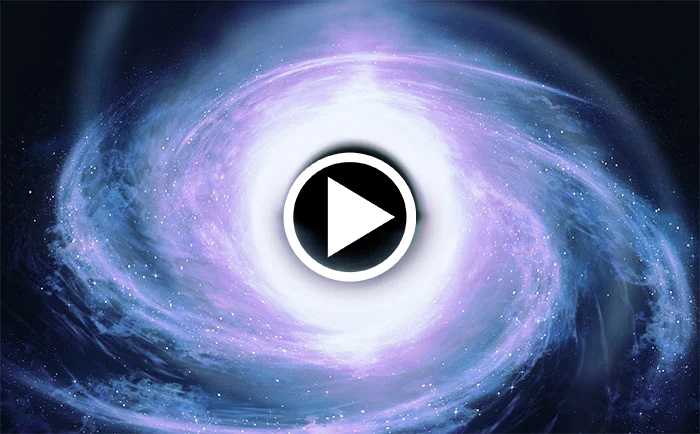One of Stephen Hawking’s most famous theorems has been found to be correct, using ripples in space-time caused by the merger of two distant black holes. The regions of black holes are associated with the amount of disorder in the universe.
A cosmic black hole is a region of space-time where the gravitational field is so strong that nothing, no particle of matter, or even electromagnetic radiation like light, can escape it. General relativity predicts that a large enough amount of matter in a sufficiently small range will warp spacetime to become a black hole.
The black hole area theorem, proposed by Hawking in 1971 from Einstein’s general theory of relativity, states that the area of a black hole cannot decrease over time. This rule is of interest to physicists because it is closely related to another rule which seems to fix the execution time in a particular direction: the second law of thermodynamics, which states that the entropy, or disorder, of a closed system must always increase. Since the entropy of a black hole is proportional to its area, both must always increase.
According to the new study, researchers’ confirmation of the law of area appears to imply that the properties of black holes are important clues to the hidden laws that govern the universe. Oddly enough, the law of area seems to contradict another proven theorem from the famous physicist that black holes evaporate over extremely long time scales, so finding the source The root of the contradiction between the two theories may reveal a new physical.
“It is not possible to reduce the area of a black hole, it is like the second law of thermodynamics. It also has conservation of mass, because you cannot reduce its mass, so it is similar. ”said lead author Maximiliano Isi, astrophysicist at the Massachusetts Institute of Technology.
He added, “At first people were talking about a large parallel, but we quickly realized that it was fundamental. Black holes have entropy, and it’s proportional to their area. It’s not just a funny coincidence, it’s a deep truth about the world they reveal. “
The surface of the black hole is established by a spherical boundary known as the event horizon – beyond this point nothing, not even light, can escape its strong gravity.
According to Hawking’s interpretation of general relativity, as the area of a black hole increases with its mass, and because no object thrown into it can escape, so does the area. not be reduced. But the area of the black hole also decreases as it spins, so researchers wondered if it was possible to throw an object hard enough inside it to spin the black hole enough to shrink its area. .
“You’re going to spin it more, but not enough to offset the mass you just added. Whatever you do, the mass and spin will make it bigger,” Isi explains.
To test this theory, the researchers analyzed gravitational waves, or ripples in the structure of space-time, created 1.3 billion years ago by two massive black holes as they spiral around the towards each other at high speed. These are the first waves ever detected in 2015 by the Advanced Laser Interferometer Gravitational-Wave Observatory (LIGO), a 1,864-mile (3,000 km) long laser beam capable of detecting small distortions in cosmic time by altering its path length.
By dividing the signal into two halves – before and after the black holes merged – the researchers calculated the masses and spins of the original black hole and a newly combined black hole. These numbers allowed them to calculate the area of each black hole before and after the collision.
The area of the newly created black hole is larger than the area of the two original holes combined, confirming Hawking’s area law with more than 95% confidence.
The researchers published their findings on May 26 in the journal Physical Review Letters.


